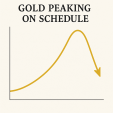One for the Road
No question, yesterday's broad decline was a mean body blow to millions of investors. However, the suspicion lingers that it failed to deliver the haymaker that alone can check Wall Street's potentially tragically misplaced faith in Fed Chairman Alan Greenspan. It is an article of faith that, when the central bank loosens, a weak economy will magically spring to life a few months later. So with 150 basis points worth of easing already in the economic pipeline, and presumably even lower rates in store, it's no surprise that so many pundits are predicting the good times will return later this year.
Indeed, the overwhelming majority of economists, including Mr. Greenspan, clearly view the current slowdown as a mild and necessary inventory correction. As Austrian-school economist Dr. Kurt Richebacher has taken pains to illustrate, however, his colleagues are entirely wrong in this assumption. In fact, it is quite clear from tables that he has reproduced in his March newsletter that, until year-end, inventory build-up was the major support for the economy, especially in manufacturing. What has slumped, notes Richebacher, is final sales -- which have crashed to around 2% from a heady 6% rate in 2000. What this portends, he says, is that regardless of how much stimulus the Fed tries to apply, consumers and corporate borrowers are unlikely to follow the script. "History has shown that there are times when factors other than the central bank play the governing role in the credit system, and we are furthermore sure that the present is such a time. Considering ravaged balance sheets of consumers and corporations, and drastically diminished profit and income expectations, the two have obvious reasons of their own to retrench their borrowing and spending."
Unlike 1990-91
Dr. Richebacher sees some key differences between now and 1990-91, when credit stimulus evidently worked to bring us out of recession. Back then, he notes, consumers saved 8.3% of their current income; today, savings growth is negative. Also, the trade deficit was running at less than $80 billion a decade ago, while today it is at $450 billion. And consumer debt has almost doubled, while business debt is up 70%. There are other differences noted by Dr. Richebacher, but one that he doesn't mention that I view as particularly troublesome is the role of mortgage borrowing in the current resuscitation effort. While anyone who reads the business pages will already know that money aggregates have skyrocketed since the beginning of the year, few could tell you where all the money has come from. As of February 25, the three-month annualized growth rate for M2 was 11.3%, and for M3, 13.2%. My colleague Michael Belkin, writing in the current issue of Strategic Investment (800 435-1528), traces this growth, not to expansion of the Fed's balance sheet, but to expansion of Fannie Mae's. "The money supply is not being goosed by the Fed," he notes, "but by Fannie Mae -- as if there is a tacit official agreement to use [a government-sponsored enterprise] as a Keynsian pump-priming mechanism."
No homeowner or buyer could have failed to notice the effect. The Fed has been putting money into the hands of consumers in the most efficient way it knows -- by turbocharging the market for re-fi's and home equity loans, and by coaxing into the residential market those marginal first-time buyers who are least able to afford homes. If this is the way to avoid recession, then giving chronic drunks one more drink "for the road" is the best way to keep our highways safe.
No Heart-Stopper
Meanwhile, Tuesday's shock wave may have stirred up the pundits, but whether it filled investors with the kind of dread we associate with rare buying opportunities remains highly questionable. The Dow Industrials were down 292 points at the close, nearly 60 points off their lows. That may sound like a pretty nasty blow to shareholders, but it seems to have left most of the high-profile commentators speculating, as they have for many weeks, that a bottom must be close at hand. No doubt. But while that bottom might be no more than a day or two away, there is no predicting how much further the averages could fall in the meantime. It is true that some tech stocks have been beaten down so hard that sellers are likely spent, or close to it. Cisco, Amazon and Yahoo spring to mind, but you can probably think of a dozen others.
This fact is the crux of the bullish argument -- that once the tech stocks reach the point where they can be pushed down no further and begin to stabilize, the broad market will launch skyward, unburdened of Nasdaq blues. While this is possible, more likely is that we will see a selling spike that will leave no doubt about whether the air has been cleared. My best guess concerning where the selling would terminate? When the S&P futures fall to 1000 -- 108 points beneath Tuesday's close. Better yet, make it 980, which would be just far enough beyond the obvious number to give the chartists and talking heads a mild heart attack -- in this case, just what the doctor ordered.

















